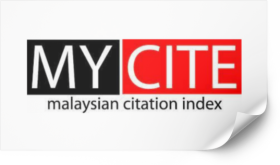The Impact of Sewage Treatment Plant Loading to River Basin during Movement Control Order
DOI:
https://doi.org/10.37934/progee.23.1.113Keywords:
MCO, Wastewater, LoadingAbstract
Environment quality is essential aspects of life on earth, any changes in the quality have a significant impact on human beings. The implementation unprecedented Movement Control Order (MCO), which halted social, economic, and other activities except essential services contributed to opportunities for the earth to rejuvenate itself and build a better blue sky, peaceful wildlife, controlled noise pollution, and improved environmental features. Although the unprecedented Movement Control Order (MCO) due to COVID-19 pandemic posed some adverse effects on the environment, but there are also some benefits on the environment. One of the significant positive effects by the MCO is that the environment had rejuvenated during this period, especially significant water quality improvement. Many reports worldwide, including Malaysia, had reported that the environment including water quality had shown signification improvement. With controlled activities, MCO recognized contributed to river water quality rejuvenation amidst one of the main essential service sewage treatment plant operating at its fullest capacity. Amidst of various river pollution sources, Sewage Treatment Plant (STP) effluent discharge loading was identified as one of the main water resource polluters, and the MCO phenomenon turn raises the question of whether the STP effluent discharge loading onto river resources is the main culprit to the river pollution. This is a new challenge for water resources management to examine the impact of sewage treatment effluent discharge loading on water resource pollution loading in Malaysia. This study investigates the influence of sewerage treatment plant effluent loading from the Kuala Lumpur sewerage catchment to the Klang River basin within the Kuala Lumpur City Centre. The river’s natural self-carrying loading was investigated to evaluate the influence of sewerage effluent loading on the selected river basin. The STPs within the study area were identified and segregated based on its tributary river basin. The individual STP’s Biological Oxygen Demand (BOD) and Suspended Solid (SS) average effluent discharge loading of the year 2020 analyzed against the study River’s BOD and SS average self-loading of the year 2020. The STP and River loading were analyzed to investigate the fraction of STP effluent discharge loading against River loading in the study river basin during MCO.
References
World Health Organization, WHO Director-General’s remarks at the media briefing on 2019-nCoV on 11 February briefing on 2019-nCoV, 11 February 2020. https://www.who.int/dg/speeches/detail/who-director-general-s-remarks-at-the-media-briefing-on-2019-ncov-on-11-february-2020.
A. Elengoe, COVID-19 outbreak in Malaysia, Osong Public Health and Research Perspectives 11(3) (2020) 93–100. https://doi.org/10.24171/j.phrp.2020.11.3.08.
A.U.M. Shah, S.N.A. Safri, R. Thevadas, N.K. Noordin, A. Abd Rahman, Z. Sekawi, A. Ideris, M.T.H. Sultan, COVID-19 outbreak in Malaysia: Actions taken by the Malaysian government, International Journal of Infectious Diseases 97 (2020) 108–116. https://doi.org/10.1016/j.ijid.2020.05.093.
J. Chitra, S.M. Rajendran, J.J. Mercy, J. Jeyakanthan, Impact of COVID-19 lockdown in Tamil Nadu: Benefits and challenges on environment perspective, Indian Journal of Biochemistry & Biophysics 57(4) (2020) 370–381.
O.O. Fadare, E.D. Okoffo, Covid-19 face masks: A potential source of microplastic fibers in the environment, The Science of The Total Environment 737 (2020) 140279. https://doi.org/10.1016/j.scitotenv.2020.140279.
I. Chakraborty, P. Maity, COVID-19 outbreak: Migration, effects on society, global environment and prevention, Science of the Total Environment 728 (2020) 138882. https://doi.org/10.1016/j.scitotenv.2020.138882.
T. Rume, S.D.U. Islam, Environmental effects of COVID-19 pandemic and potential strategies of sustainability, Heliyon 6(9) 2020 e04965. https://doi.org/10.1016/j.heliyon.2020.e04965.
N.A.M. Radhi, Can We Keep the Rivers Clean Post-MCO?, New Straits Time Newspaper, accessed 30 April 2022. nst.com.my/news/nation/2020/04/588724/can-we-keep-rivers-clean-post-mco.
W.N. Wan Ahmad, A. Ali, Sustaining positive impact of Covid-19 Movement Control Order (MCO) on environment through new norm - Case of Malaysia, Indian-Pacific Journal of Accounting and Finance, 4(3) (2020) 3-14. https://doi.org/10.52962/ipjaf.2020.4.3.107.
A. Najah. F.Y. Teo, M.F. Chow, Surface water quality status and prediction during movement control operation order under COVID-19 pandemic: Case studies in Malaysia, International Journal of Environmental Science and Technology 18 (2021) 1009–1018. https://doi.org/10.1007/s13762-021-03139-y.
C.L. Goi, The river water quality before and during the Movement Control Order (MCO) in Malaysia, Case Studies in Chemical and Environmental Engineering 2 (2020) 100027. https://doi.org/10.1016/j.cscee.2020.100027.
The Star, Thanks to MCO, Sungai Melaka is Green and Clean, The Star Newspaper, accessed 25 April 2020. https://www.thestar.com.my/news/nation/2020/04/25/thanks-to-mco-sungai-melaka-is-green-and-clean.
Straits Times 2020. https://www.straitstimes.com/asia/se-asia/penang-river-green-again-thanks-to-mco.
DOE, 2016 https://enviro2.doe.gov.my/ekmc/digital-content/laporan-kualiti-alam-sekeliling-2016-2/
DOE, 2017 https://enviro2.doe.gov.my/ekmc/digital-content/malaysia-environmental-quality-report-2017-2/.
DOE, 2019 https://enviro2.doe.gov.my/ekmc/digital-content/laporan-kualiti-alam-sekeliling-2019/.
M.H., Raja Aznn, Integrated assessment of the Klang River water quality for environment management, Universiti Malaysia Pahang, 2017. http://umpir.ump.edu.my/id/eprint/24752/.
Balan, A. (2012) Saving Sungai Klang. Klang, Selangor: The Malaysian Times, The Malaysian Times Sdn Bhd. https://www.thestar.com.my/lifestyle/features/2012/05/29/saving-sungai-klang
M.A. Aman, M.S. Salman, A.P. Yunus, COVID-19 and its impact on environment: improved pollution levels during the lockdown period–a case from Ahmedabad, India, Remote Sensing Applications: Society and Environment 20 (2020)100382. https://doi.org/10.1016/j.rsase.2020.100382.
M. Ariffin, S.N.M. Sulaiman, Regulating sewage pollution of Malaysian rivers and its challenges, Procedia Environmental Sciences 30 (2015) pp.168-173. https://doi.org/10.1016/j.proenv.2015.10.030.
DOE, 2020 https://enviro2.doe.gov.my/ekmc/digital-content/laporan-tahunan-jabatan-alam-sekitar-2020/
LUAS, State of the River Report 2015 by Luas for Klang River https://www.luas.gov.my/v3/images/penerbitan/Laporan_Sungai/SOR Sg.Klang 2015.pdf.

Downloads
Published
How to Cite
Issue
Section
License
Copyright (c) 2023 Progress in Energy and Environment

This work is licensed under a Creative Commons Attribution-NonCommercial 4.0 International License.











